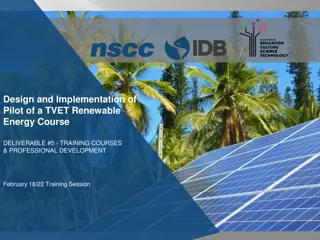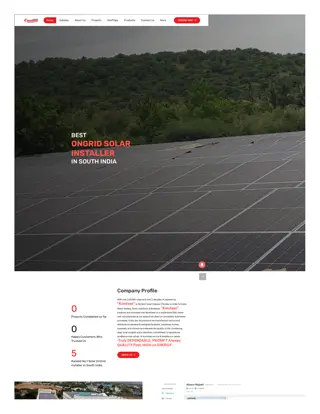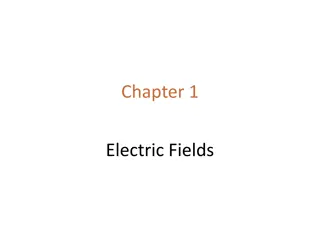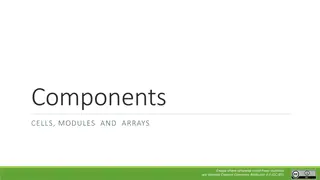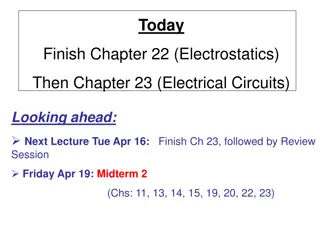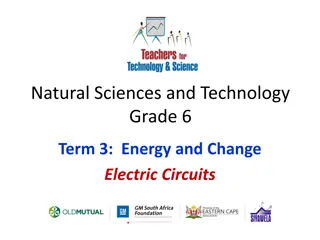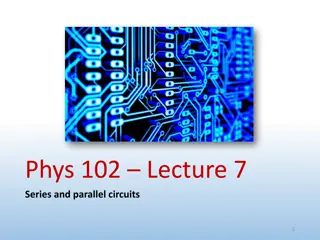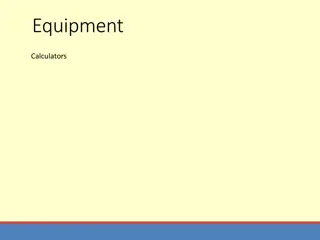Understanding Electric Circuits and Solar Panels
Exploring the basics of electric circuits, solar panels, and the interplay between voltage, current, and resistance. Learn about series vs. parallel circuits, different types of current, and the principles behind photovoltaics. Discover how to wire loads/sources in series and the significance of voltage levels in power storage. Delve into the fascinating world of harnessing light to generate electricity through solar panels.
Download Presentation

Please find below an Image/Link to download the presentation.
The content on the website is provided AS IS for your information and personal use only. It may not be sold, licensed, or shared on other websites without obtaining consent from the author. Download presentation by click this link. If you encounter any issues during the download, it is possible that the publisher has removed the file from their server.
E N D
Presentation Transcript
Solar Panels and Electric Circuits
Basics of Electric Circuits A circuit is: A group of components connected together to perform a given task We will be wiring together a circuit to make our solar panel product.
Basics of Electric Circuits Think them like a water system to supply your house with fresh water. Current: The flow: This is how much water is going thru the pipe. Voltage: The push: This is how high the water tower is compared to your home. Resistance: The opposition to the flow: This is the diameter of the pipe. Series: 1 pipe: If you had 1 pipe in your house that had a lot of faucets in series, turning off 1 faucet would have a effect on all the other faucets. Parallel: Multiple pipes: Water can flow to each faucet individually and 1 faucet has no effect on the other.
More potential energy =more voltage =bigger battery Same PE; bigger pipe = more current Same PE; smaller pipe =less current Bigger pipe =less resistance Smaller pipe = more resistance
Series vs Parallel Circuits Parallel circuits maintain potential (voltage is constant) Current is divided among components If one light goes out, the others stay lit Series circuits maintain electrical flow (current is constant) Voltage is divided among components Easy to open circuit quickly
Loads/sources wired in series VOLTAGES ARE ADDITIVE CURRENT IS EQUAL ALLOWS FOR MORE POWER STORAGE AT HIGHER VOLTAGES
DC vs AC Current Direct Current This is the type of voltage you get from a battery or a photovoltaic cell Alternating Current This is the type of voltage that comes from your wall outlet. Used in this class and in handheld electronics. Used in commercial and residential wiring. Requires high voltage to transmit over a relatively small distance. Requires lower voltage to transmit over long distance.
Photovoltaics Photo+voltaic = convert light to electricity
Driven by Space Applications in Early Days
How does it work The heart of a photovoltaic system is a solid-state device called a solar cell.
Photovoltaic System Charge Controller = a piece of equipment that allows you to interface between a battery, a solar collector, and an energy load
Advantages of Solar Power Clean Sustainable Free Provide electricity to remote places No reliance on the power grid.
Disadvantages of Solar Power Less efficient and costly equipment Part Time Reliability Depends On Location Environmental Impact of PV Cell Production
References: SparkFun Electronics UC Berkley Bucknell University




